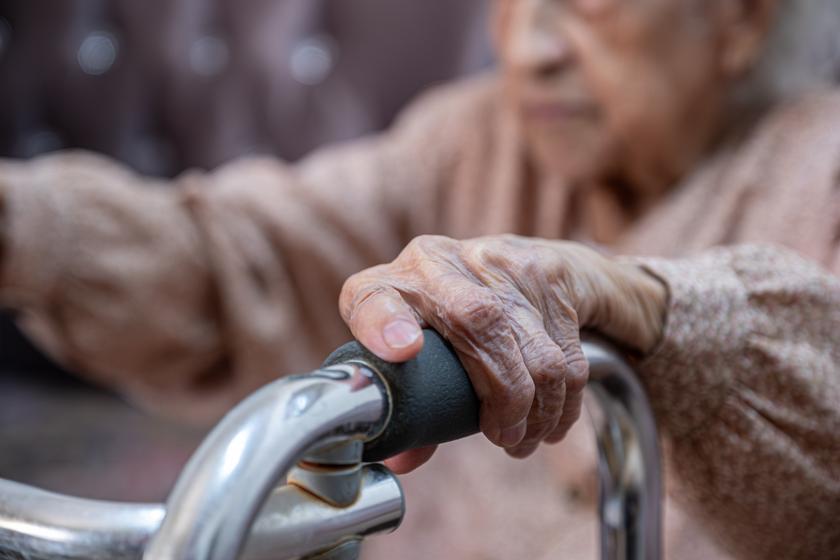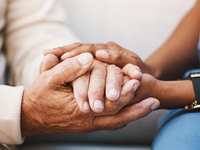World Elder Abuse Awareness Day: Protecting Our Seniors

Each year, on June 15th, the world comes together to observe World Elder Abuse Awareness Day (WEAAD). This day is a critical opportunity to highlight a deeply concerning issue that affects millions of older adults globally—elder abuse. As our society continues to age, ensuring the safety, dignity, and well-being of our seniors becomes not just important, but imperative. Elder abuse can manifest in various forms, including physical, emotional, and financial, as well as neglect and abandonment. These acts not only inflict significant harm on individuals but also undermine the fabric of our communities.
The establishment of WEAAD by the International Network for the Prevention of Elder Abuse (INPEA) and the World Health Organization (WHO) underscores the gravity of this issue. It’s a day to raise awareness, promote understanding, and stimulate dialogue about the often hidden problem of elder abuse. This awareness is crucial for mobilizing communities, influencing policy, and driving systemic change to protect our elderly population.
In this blog, we will delve deeply into the significance of World Elder Abuse Awareness Day. We will explore the various forms of elder abuse, shedding light on the signs and symptoms that may indicate an elder is being mistreated. Furthermore, we will discuss the risk factors that increase the likelihood of elder abuse, including social isolation, dependency, and caregiver stress. Understanding these factors is essential for prevention and intervention.
WHAT IS WORLD ELDER ABUSE AWARENESS DAY?
Every year on June 15th, countries around the world come together to raise awareness about the millions of older adults who experience elder abuse, neglect, and exploitation. It’s called World Elder Abuse Awareness Day.
But here’s the thing. Elder abuse is a global issue that’s only getting worse as our population ages. And it’s not just physical abuse we’re talking about. It’s emotional abuse, financial exploitation, neglect, and abandonment too.
HISTORY OF WORLD ELDER ABUSE AWARENESS DAY
World Elder Abuse Awareness Day (WEAAD) was officially recognized by the United Nations General Assembly in December 2011, following a request by the International Network for the Prevention of Elder Abuse (INPEA). The day aims to provide an opportunity for communities around the world to promote a better understanding of the abuse and neglect of older persons by raising awareness of the cultural, social, economic, and demographic processes affecting elder abuse and neglect.
PURPOSE OF WORLD ELDER ABUSE AWARENESS DAY
World Elder Abuse Awareness Day aims to raise awareness about the abuse and neglect experienced by older adults. This day is dedicated to promoting understanding, preventing abuse, and supporting the well-being of elders worldwide. It seeks to educate communities, policymakers, and organizations about the importance of protecting the rights and dignity of older people. By highlighting the often hidden and underreported issues of elder abuse, this day encourages society to recognize the signs of abuse and take action. Through various activities, events, and educational campaigns, World Elder Abuse Awareness Day fosters collaboration among individuals, families, and institutions to create safer and more supportive environments for older adults. Ultimately, the day emphasizes the collective responsibility to ensure that all elders live with respect, security, and the care they deserve.
TYPES OF ELDER ABUSE
Elder abuse isn’t just physical. It comes in many forms, and it’s important to recognize them all. Here are the main types of elder abuse:
FINANCIAL ABUSE
Financial abuse is a type of elder abuse that involves the illegal, unauthorized, or improper use of an elder’s resources by a caregiver or other person in a trusting relationship, for the benefit of someone other than the older person. Examples include forgery, misuse or theft of money or possessions, use of coercion or deception to surrender finances or property, or improper use of guardianship or power of attorney.
PHYSICAL ABUSE
Physical abuse involves the use of physical force that may result in bodily injury, physical pain, or impairment. It may include acts of violence like striking, hitting, beating, pushing, shoving, shaking, slapping, kicking, pinching, and burning. Inappropriate use of drugs and physical restraints, force-feeding, and physical punishment of any kind also are examples of physical abuse.
EMOTIONAL ABUSE
Emotional or psychological abuse is defined as the infliction of anguish, pain, or distress through verbal or nonverbal acts. It includes verbal assaults, insults, threats, intimidation, humiliation, and harassment. Treating an older person like an infant; isolating an elderly person from his/her family, friends, or regular activities; giving an older person the “silent treatment;” and enforced social isolation are examples of emotional/psychological abuse.
NEGLECT AND ABANDONMENT
Elder neglect is the failure to fulfill a caretaking obligation. It can be intentional or unintentional, based on factors such as ignorance or denial that an elderly charge needs as much care as they do. Examples include not providing adequate food, water, clothing, medications, and assistance with activities of daily living. Abandonment is leaving an elderly person alone without planning for their care.
SIGNS AND SYMPTOMS OF ELDER ABUSE
Recognizing the signs and symptoms of elder abuse is crucial for identifying victims and getting them the help they need. Here are some common indicators:
PHYSICAL SIGNS
Some of the physical signs of elder abuse include bruises, pressure marks, broken bones, abrasions, and burns. These may be an indication of physical abuse, neglect, or mistreatment. Unexplained withdrawal from normal activities, a sudden change in alertness, and unusual depression may also be indicators of emotional abuse.
BEHAVIORAL SIGNS
Behavioral signs of elder abuse can include increased fear or anxiety, isolation from friends or family, withdrawal from previously enjoyed activities, and unusual changes in behavior or sleep patterns. The elderly may also display signs of trauma, like rocking back and forth or mumbling to themselves.
FINANCIAL SIGNS
Financial abuse warning signs include significant withdrawals from accounts, sudden changes in financial condition, items or cash missing from the household, unpaid bills or lack of medical care, and suspicious changes in wills, power of attorney, titles, and policies. The elderly person may also exhibit unusual fear of or sudden change in feelings about a particular person.
HOW TO REPORT ELDER ABUSE
If you suspect an elderly person is being abused, it’s crucial to speak up. Here’s how you can report elder abuse:
CONTACTING ADULT PROTECTIVE SERVICES
If you suspect that an elderly person is at risk from a neglectful or overwhelmed caregiver, or being preyed upon financially, it’s important to contact Adult Protective Services (APS). APS is a state-administered agency that provides help to seniors and adults with disabilities who are in danger of harm, are unable to take care of themselves or protect themselves from abuse, and have no one to assist them.
INVOLVING LAW ENFORCEMENT
If you witness abuse or an elderly person is in immediate, life-threatening danger, call 911 or the local police for immediate help. If the danger is not immediate, but you suspect that abuse has occurred or is occurring, relay your concerns to the local adult protective services, long-term care ombudsman, or the police.
DOCUMENTING EVIDENCE
Documenting evidence is crucial when reporting elder abuse. Keep a journal of incidents you observe, including dates, times, locations, and any other relevant information. Take photographs of visible injuries or unsafe conditions. Keep copies of all correspondence and documents related to the situation. This information will be helpful when filing a report with Adult Protective Services or law enforcement.
SUPPORTING VICTIMS OF ELDER ABUSE
Supporting victims of elder abuse is essential for their recovery and well-being. Here are some ways you can help:
PROVIDING EMOTIONAL SUPPORT
Providing emotional support is crucial for victims of elder abuse. Listen to them without judgment, offer reassurance, and validate their feelings. Let them know that the abuse is not their fault and that they deserve to be safe and treated with respect. Encourage them to talk about their experiences and express their emotions.
CONNECTING WITH RESOURCES
Help connect the victim with local resources, such as elder abuse hotlines, support groups, counseling services, and legal aid. Many communities have agencies that provide services for seniors, including meals, transportation, and in-home care. Assist the victim in accessing these resources to help ensure their safety and well-being.
ENSURING SAFETY
If the victim is in immediate danger, call 911 or local law enforcement right away. If the situation is not an emergency, but the victim is still at risk, help them develop a safety plan. This may include finding a safe place to stay, changing locks on doors, or installing a security system. Work with local adult protective services or law enforcement to ensure the victim’s ongoing safety.
PREVENTING ELDER ABUSE
Preventing elder abuse is a critical step in protecting the well-being and dignity of older adults. Here are some strategies for prevention:
EDUCATION AND AWARENESS
One of the most effective ways to prevent elder abuse is through education and awareness. This includes educating seniors, family members, caregivers, and the general public about the signs and symptoms of elder abuse, as well as how to report suspected abuse. Holding community workshops, distributing informational materials, and leveraging media outlets can help spread awareness and prevent abuse.
STRENGTHENING SUPPORT SYSTEMS
Strengthening support systems for seniors can also help prevent elder abuse. This includes ensuring access to social services, healthcare, and community resources. Encouraging seniors to stay socially connected and engaged in their communities can reduce isolation and vulnerability to abuse. Supporting caregivers through respite care, training, and resources can also help prevent caregiver burnout and reduce the risk of abuse.
ADVOCATING FOR POLICY CHANGES
Advocating for policy changes is crucial in addressing the systemic issues that contribute to elder abuse and neglect. By pushing for comprehensive policies, advocates aim to create a legal framework that protects the rights and well-being of older adults. This involves engaging with lawmakers, stakeholders, and the public to raise awareness about the importance of robust elder protection laws and regulations. Effective advocacy seeks to ensure that there are stringent measures in place for the prevention, detection, and prosecution of elder abuse. It also emphasizes the need for adequate funding for services and support systems that cater to the needs of older adults. Through persistent efforts and collaboration, advocates work towards policy changes that foster safer, more inclusive communities where elders can live with dignity and security
HOW TO GET INVOLVED IN WORLD ELDER ABUSE AWARENESS DAY
Getting involved in World Elder Abuse Awareness Day is a great way to show your support for ending elder abuse. Here are some ways you can participate:
ATTENDING LOCAL EVENTS
Many communities organize events and activities on World Elder Abuse Awareness Day to raise awareness and engage the public. These may include educational workshops, community forums, fundraisers, and social events. Attending these events is a great way to learn more about the issue, connect with others who are passionate about preventing elder abuse, and show your support for the cause.
SHARING INFORMATION ON SOCIAL MEDIA
Social media is a powerful tool for spreading awareness about World Elder Abuse Awareness Day and the issue of elder abuse. Share informational posts, articles, and resources on your social media profiles to educate your followers and encourage them to get involved. Use relevant hashtags, such as #WEAAD or #ElderAbuseAwareness, to join the global conversation and amplify your message.
VOLUNTEERING WITH ORGANIZATIONS
Many organizations that work to prevent elder abuse and support victims rely on volunteers to carry out their mission. Consider volunteering with a local adult protective services agency, long-term care ombudsman program, senior center, or advocacy organization. You can help with a variety of tasks, such as assisting with educational programs, providing peer support to seniors, or participating in fundraising events. Volunteering is a rewarding way to make a difference in the lives of seniors and contribute to the fight against elder abuse.
CONCLUSION
World Elder Abuse Awareness Day is not merely a date to mark on the calendar; it serves as a poignant wake-up call. It resounds as a reminder of our profound obligation to safeguard our seniors from all forms of harm. Throughout our journey, we’ve familiarized ourselves with the subtle signs of abuse, underscored the criticality of promptly reporting any suspicions, and recognized the transformative potential of proactive prevention measures. However, mere awareness and understanding fall short in the absence of decisive action.
Therefore, let us become the architects of change, the champions our seniors deserve. Let’s actively engage in volunteering efforts, amplify our voices as advocates, and extend unwavering support to organizations dedicated to combating elder abuse. Let us pledge not just a one-day commitment, but an enduring dedication to the well-being of our elderly population.
When we unite in purpose, we wield the collective strength to forge a reality where every senior finds solace in safety, affirmation in value, and warmth in love, even in assisted living in Spring, TX. Such a vision epitomizes the world we aspire to inhabit—a world where compassion reigns supreme and the dignity of our elders is upheld. Will you join me in shaping this reality?

















